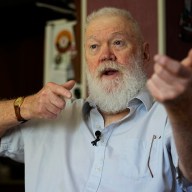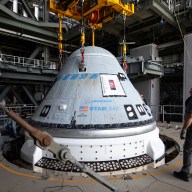Individual driving styles and habits have a huge bearing on fuel consumption.
This is not news, and most drivers know well the difference between a “fuel-ish” driving behaviour and a good one.
Most times it just comes down to common sense — like refraining from tire-smoking burnouts after dropping the kids off at nursery school, using highways more often than sidewalks, and taking the dead moose off the car roof after hunting season.
But according to Natural Resources Canada (NRC), drivers don’t often put into practice what they know, and are unaware of what can be achieved by even a relatively small change in driving behaviour.
Which is why NRC has embarked on the mission to take its Eco-Simulator to car shows across the country. Maybe you have already seen it — it’s looks like a huge video game, with three large screens and a driver’s seat.
“It’s a great way of engaging people into this subject,” says NCR’s Andrew Pape, one of the simulator’s handlers. “It’s also kind of cool. It attracts lots of attention.”
Wherever it goes, there is no shortage of willing participants, says Pape.
As father of a young man, I absolutely agree with the premise of the Eco-Simulator — make the lesson a competition. Participants get a practice run, then some coaching by NCR on the five time-honoured ways to improve fuel efficiency: accelerate gently; maintain a steady speed; anticipate traffic; coast to decelerate; and avoid high speeds.
Pape says that when participants use all five strategies in their second run they usually improve their fuel efficiency score by an average of 25 per cent. On my one run I achieved a simulated score of 4.41 L/100 km. I didn’t do a second because the simulator gave me simulated nausea.
As all participants, I get a printout showing where I deviated from a “best practice” performance. The world record on this device is 3.51 L/100 km, set by auto journalist Russ Bond.
My main problem was going too slowly — I often didn’t get into the “top gear,” which would have given my vehicle greater efficiency. Pape says the game’s sweet spot for fuel efficiency is 50 to 80 km/hr, exactly where it is in real driving.
Just like real driving, the simulator doesn’t take kindly to illegal manoeuvres. You get penalized, for example, if you roll through stop signs, and/or go too slowly or too quickly.
And whenever a 17-year-old lad takes a seat, and proceeds to Grand Theft Auto his way through the exercise to show off his disregard for fuel efficiency, Pape and company can do even more than penalize.
“We can turn the road to ice, so he spins off, or we can blow up one of his tires.”
Nice.
















